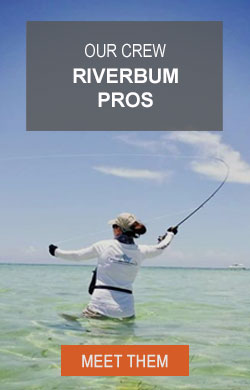Sight Nymphing
Most nymph fishing requires anglers to rely on a visual aid like a strike indicator or on feel to alert them to the strike of a fish. Sometimes though, especially when fish are visible, you can fish nymphs quite effectively without an indicator and without having to rely on the feel of the fish's take. Here are a few tactics and things to remember for effective sight-nymphing.
One kind of place this tactic seems to work for me is in heavily fished tailwaters where trout are accustomed to and are less wary of anglers. Often fish in these kind of places will continue to feed even if you are near, allowing you to get close, watch their feeding patterns, and eventually to make a presentation. Try it though on any water you fish where trout are visible as they feed.
First determine that your targeted trout is actually feeding. Fish that are feeding will move from side to side occasionally to grab a drifting bug, and you may even be able to see the white of their mouths as they open up to feed. Fish that aren't feeding will hold tight to the bottom in one spot with their tail slightly fluttering to keep them as still as possible. If you see this it's best to move on to another target. I've watched frustrated anglers waste a lot of time trying to fish to fish that just weren't ever going to eat.
Next, when you have determined that fish are feeding, rig a single weighted nymph that is heavy enough to get near the stream bottom quickly without being so heavy that it will hang up. You can also choose to tie a dropper nymph from the heavy nymph if it's more likely that your fish will take a smaller lighter fly than you can get near the bottom without added weight. Position yourself downstream and slightly across from the feeding fish and cast several feet upstream of the fish. Be sure to quickly gain control of the line after the cast to be ready to set the hook.
If you can see your fly then watch its drift. If it's too light and is drifting far above or if it's too heavy and is hitting bottom before it reaches the fish then adjust flies accordingly.
If you can't see your fly then watch the fish intently. If the fish moves to the side quickly or visibly opens its mouth when you think your fly should be approaching then set the hook; he probably has your fly.
If the fish seems to be ignoring your fly but is still feeding it's good to give him a bit of a rest and then try a new nymph. If it refuses 2 or 3 bugs then it's probably time to locate a new fish.
This skill takes a good amount of practice but once you are good at it you'll realize that it is a lot of fun and that you are catching fish from places other anglers are missing since they tend to just hit the obvious spots where an indicator nymph rig works.






